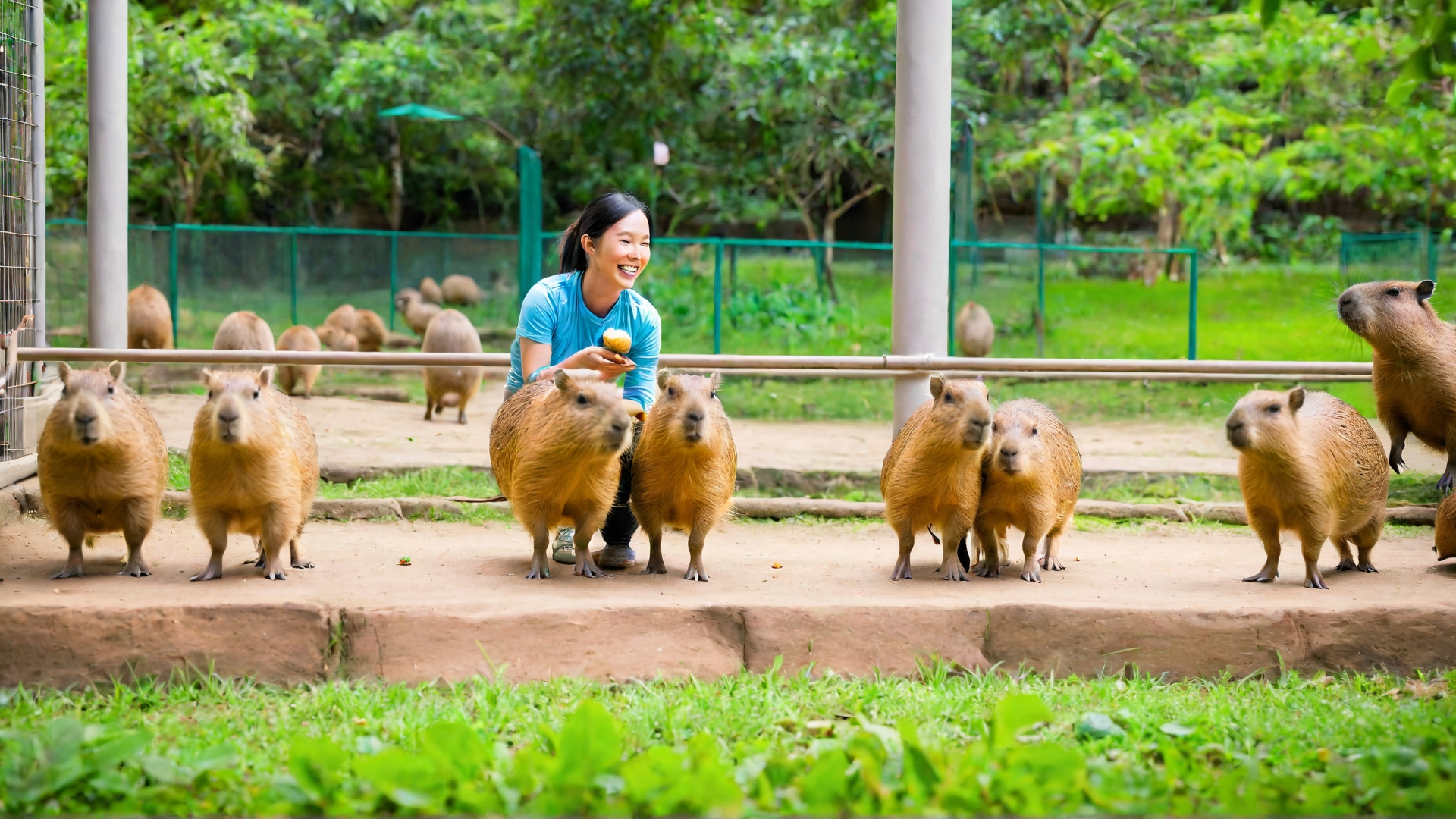Your cart is currently empty!
Capy Planet
Embrace The Capybara Vibe!

Capybara: The Fascinating World’s Largest Rodent

Introduction
The capybara (Hydrochoerus hydrochaeris) is the largest living rodent in the world, native to South America. These semi-aquatic mammals are known for their sociable nature, unique adaptations to wetland habitats, and remarkable ability to coexist with a variety of other species. This article explores the essential characteristics, habitat, behavior, diet, and ecological importance of capybaras.
Taxonomy and Physical Characteristics
Capybaras belong to the order Rodentia and the family Caviidae, making them relatives of guinea pigs and rock cavies. They can grow up to 134 cm (4.4 feet) in length and weigh between 35 to 66 kg (77 to 146 pounds). Their bodies are barrel-shaped, covered in coarse brown fur, and adapted for a semi-aquatic lifestyle with webbed feet and eyes, ears, and nostrils positioned high on their heads for efficient swimming.
Habitat and Distribution
Capybaras are found throughout South America, particularly in regions with abundant water sources, such as wetlands, rivers, lakes, and marshes. Countries like Brazil, Argentina, Venezuela, and Colombia are home to large capybara populations. They thrive in tropical and subtropical climates, requiring dense vegetation for both food and shelter.
Behavior and Social Structure
Capybaras are highly social animals, typically living in groups of 10 to 20 individuals, although some herds can reach up to 100 members. These groups have a hierarchical structure, with a dominant male leading the group. Social bonds are reinforced through grooming and vocalizations, which include purrs, whistles, and barks.
Diet and Foraging Habits
As herbivores, capybaras primarily consume grasses, aquatic plants, and fruits. They have specialized digestive systems that allow them to process fibrous vegetation efficiently. To maximize nutrient absorption, capybaras engage in coprophagy (eating their own feces), which aids in the breakdown of plant cellulose.
Reproduction and Lifecycle
Female capybaras have a gestation period of approximately 150 days, giving birth to litters of 2 to 8 pups. Newborns are precocial, meaning they are well-developed at birth and can move and feed shortly after. Young capybaras stay close to their mothers but are also cared for communally within the group.
Ecological Importance
Capybaras play a crucial role in their ecosystems. As grazers, they help maintain wetland vegetation balance. They are also a food source for many predators, including jaguars, caimans, and anacondas, contributing to the natural food chain. Additionally, their burrowing and grazing behaviors influence soil composition and plant growth.
Human Interaction and Conservation Status
Capybaras are hunted in some regions for their meat and hides, and they also face habitat loss due to deforestation and wetland destruction. However, their populations remain stable, and they are classified as Least Concern by the IUCN. In some areas, capybaras are even kept as exotic pets or used in eco-tourism activities.
Conclusion
The capybara is a remarkable species with unique adaptations that allow it to thrive in aquatic environments. Its social structure, dietary habits, and ecological significance make it an important species in South American ecosystems. Conservation efforts should focus on protecting wetland habitats and promoting coexistence between capybaras and human populations to ensure their continued survival.
